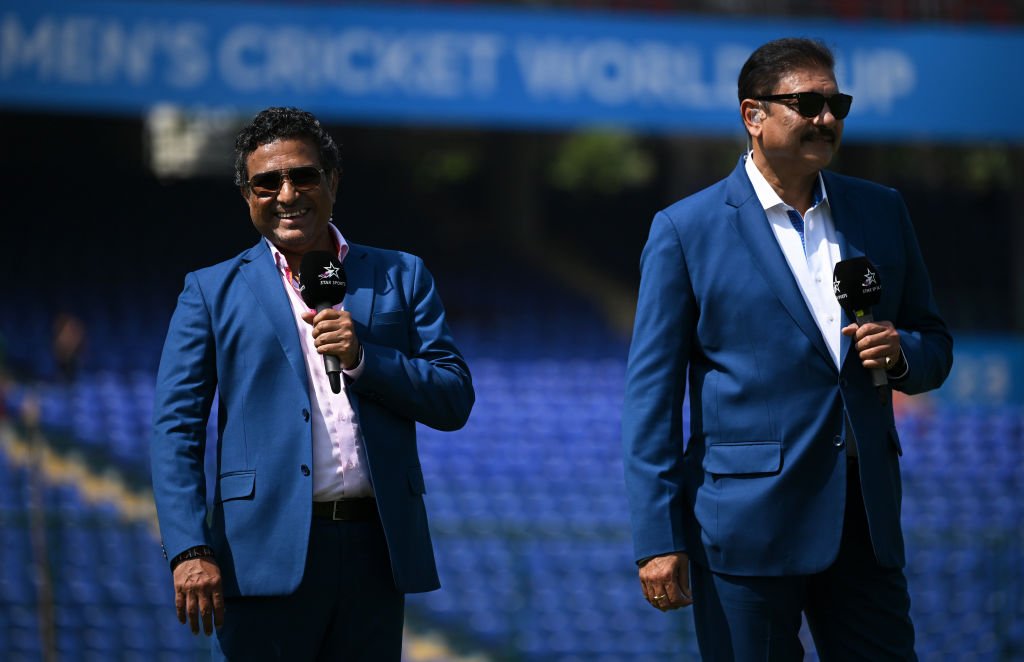
Sanjay Manjrekar, a former cricketer and well-known commentator, recently made a thought-provoking comment about Virat Kohli’s batting technique, particularly in the context of his struggles against swinging deliveries. Manjrekar stated, “He’s put all his eggs in one basket, Kohli, which is about not getting out on the front foot, to that swinging full-length ball. But that’s now making him a little vulnerable to all other deliveries.” This statement has sparked a broader discussion on Kohli’s approach to batting and how it might be affecting his consistency, especially when facing different types of bowlers.
Kohli, one of the most prolific batsmen in modern cricket, has built his reputation on being able to tackle a variety of challenges. His ability to adapt and evolve with the changing dynamics of international cricket has made him a formidable player across all formats. However, his recent performances, particularly in the Test arena, have been a cause of concern for some. While Kohli continues to be an integral part of India’s batting lineup, critics, including Manjrekar, believe that a particular flaw in his technique could be making him more vulnerable to certain types of deliveries.
The primary concern that Manjrekar raises is Kohli’s focus on not getting out to full-length balls that swing. In many ways, Kohli’s technique has been built around avoiding the swinging ball, a delivery that has troubled many batsmen. He has been particularly cautious about playing on the front foot when faced with such deliveries. The idea behind this is sound; by staying on the back foot and waiting for the ball to come closer to the stumps, Kohli is less likely to be caught off balance or trapped in front of the wicket. This approach has worked well for Kohli in the past, but as Manjrekar points out, it seems to have come at the cost of making him more susceptible to other types of deliveries.
The vulnerability, according to Manjrekar, lies in the fact that by focusing so much on not getting out to swinging balls, Kohli has perhaps neglected other areas of his game. When bowlers switch up their tactics and bowl deliveries that don’t swing or take the ball in a different direction, Kohli may not always be as well-prepared. In essence, his batting is now a little one-dimensional, and he may not be reacting as quickly to the variations in the bowlers’ approaches.
In cricket, adaptability is one of the most important qualities for a batsman. Bowlers are constantly looking to exploit weaknesses in a batsman’s technique, and when a player becomes too focused on countering one type of delivery, it opens up the possibility for other strategies to succeed. This is where Manjrekar’s critique becomes important. He suggests that Kohli’s technique may have become too narrow in its scope, relying heavily on avoiding swinging deliveries while leaving gaps in his response to other challenges.
For Kohli, this feedback is an opportunity to reassess his technique and possibly make adjustments that could enhance his versatility. Despite the challenges, Kohli’s sheer talent and work ethic make him one of the players most capable of adapting to changing conditions. He has previously demonstrated an exceptional ability to learn from setbacks and refine his approach. If he can address the vulnerabilities that Manjrekar has highlighted, Kohli’s career will likely continue to flourish.
The question that arises, however, is whether Kohli is aware of this issue and what steps he will take to address it. As one of the senior-most members of the Indian team, he is under constant scrutiny, especially given the high standards he has set for himself. For many years, Kohli has been a dominant figure in world cricket, and his ability to play across formats has been a defining characteristic of his career. His struggles, particularly in the longer format, have led to a deeper examination of his batting technique. Kohli’s form and how he addresses these concerns will be critical not just for his personal career but also for India’s overall success on the international stage.
Critics like Manjrekar have always been candid with their assessments, and while such commentary may seem harsh, it is part of the broader conversation about what makes a batsman successful over the long haul. In cricket, even the most established players are constantly evolving. Kohli’s career trajectory has been one of remarkable success, but like any great player, he will need to find ways to counter challenges, especially as bowlers across the world look to exploit his weaknesses.
What is clear, however, is that Virat Kohli remains one of the most formidable batsmen in world cricket. The fact that commentators like Manjrekar are analyzing his technique in such depth reflects just how highly regarded he is in the cricketing world. His performances in international cricket will continue to be scrutinized, and it is likely that Kohli will take these criticisms in stride, working on any potential weaknesses to ensure he remains one of the best.
In conclusion, Manjrekar’s comments on Virat Kohli’s batting technique provide valuable insight into an area where the Indian batsman could improve. While Kohli’s approach of focusing on swinging full-length balls has served him well in the past, it is clear that a more adaptable approach may be required to keep him ahead of the bowlers. Kohli’s ability to reflect on his game and make the necessary adjustments will determine how he fares in the years to come. The next phase of his career promises to be just as exciting as the previous one, as he continues to evolve and overcome challenges in the ever-evolving world of international cricket.

